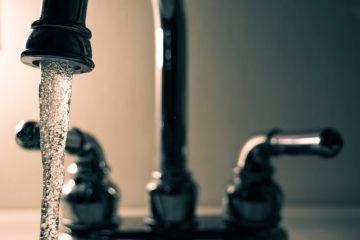8 Ways Hard Water is Costing You Money

Hard water is a nuisance for a variety of reasons. In your shower it results in dry skin and brittle hair, and running hard water through your tap means you will constantly fight water spots. But, the worst part of having hard water is that it can cause major, costly damage behind the scenes.
The Problem with Hard Water
As your water makes the journey to your home, traveling through soil and rocks en route to your water supply, it picks up various minerals. The mineral content of your water will vary, depending on the trek it took to get to you. In some regions, minerals like magnesium and calcium plague the water supply, resulting in hard water that will wreak havoc on everything it touches.
The problem occurs when these minerals accumulate to form limescale, which builds up over time. Limescale can be notoriously hard to remove from shower tiles, glass, and water fixtures. While this is a problem visually, the real problem is what is happening behind the scenes as limescale builds up in pipes and appliances, resulting in reduced water pressure and systems running on decreased efficiency. Throughout your home’s hidden systems, it breaks down your appliances’ mechanical elements and calcifies in your pipes.
The wild thing about hard water is that you may not be aware of the damage it is causing until you have a major problem on your hands and a massive repair bill blindsides you. The good news is that you can easily solve a hard water problem by installing a water softener and filter system in your home. And while it can feel like an overwhelming expense, it is a purchase that can save you massive amounts of money over the long haul. When you begin to understand the true cost of hard water, you will find that installing a whole house water conditioner is ultimately a money-saving investment.
The Cost of Hard Water
There are many ways that hard water will cost you money, from minor things like buying more soap to significant things like clearing clogged pipes. Many hidden costs can add up to lots of money compensating for a problem a water softener could have prevented.
1. Soap
The minerals in hard water actually work against your soap, making it less effective. If you have hard water, you will notice that you need more soap to get it to suds. While your soap will still work, you’ll need more to accomplish the same thing.
2. Cleaning Products
Similarly, your household cleaning products will need to work harder to counteract the mineral content of your water. In addition, you will need special cleaning products that are strong enough to break down limescale buildup in your sinks and showers.
3. Clothes
Your clothes go through a wash cycle after every wear. Over time, hard water is really tough on fabric, leaving mineral deposits on your clothes and causing them to look old and worn far before their time.
4. Dishes
Your dishes are used and washed daily. And if you live in an area with hard water, you are likely used to seeing hard water spots on them after a wash cycle. While these spots just seem annoying at first, it is actually a big problem. Over time, hard water can etch the surface of your dishes, making them look dull and permanently damaging the finish.
5. Pipes
Limescale in your pipes can become nearly impossible to get rid of. As minerals build up, they make your pipes smaller, reducing your water pressure. Your pipes will need to be cleaned and, in extreme cases, may even need to be replaced.
6. Fixtures
Limescale also builds up on your bathroom fixtures. Sink faucets, showerheads, and glass shower surrounds can suffer. It can be very hard to clean. While cleaning external water spots and limescale buildup is possible, internal clogs often mean your fixtures must be replaced entirely.
7. Appliances
Any appliance that uses water can be the victim of hard water. Refrigerators, dishwashers, washing machines, and ice makers all rely on water. Water with a heavy mineral content can cause damage and shorten the lifespan of these appliances. Not only can the water clog the internal plumbing, but it can also build up on the mechanical elements, causing them to break. Appliance replacement is a costly and inconvenient problem you can avoid with a water softening system.
8. Utilities
In addition to causing damage around your home, you may also see an increase in utility costs. As your home’s mechanical systems become less efficient due to limescale, they are forced to work harder to keep up with the increased demand. Water heaters, washing machines, and dishwashers that run with a reduced efficiency drive up your utility costs. What may be a few bucks a month now can add up to a considerable amount of money over years or decades.
Anyone who has lived with hard water knows the potential damage it causes to everything it touches. Fortunately, this frustrating and expensive problem has a simple solution. A professional can come to your home and easily install a whole home water softening and filtration system. The next day, you will get to enjoy all of the benefits of perfect water. It’s quick and easy and can save you hundreds or even thousands of dollars over the years.
Infographic
Discover the impact of hard water in your home. As water journeys from its source, it gathers minerals, often resulting in high magnesium and calcium levels, causing limescale buildup. This affects surfaces and hidden systems, reducing efficiency and leading to costly repairs. Our infographic reveals how installing a water softener prevents damage and saves on expenses.

Video



